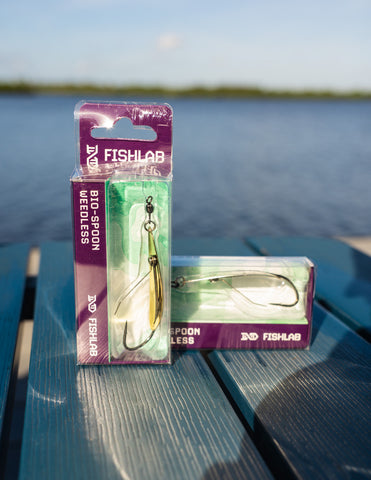As the ambient air temperature starts to rise, so does the water. Spring is one of my all-time favorite seasons for fishing. Fish are gradually warming up and feeding aggressively especially redfish. There is no doubt that redfish will eagerly consume an array of different baits this time of year, but there is one artificial that sets itself apart from the others. Have you guessed it?
If you said the "gold spoon," you'd be right. When you look at the spoon, overall, it seems unimpressive, to be honest. However, that is also the beauty of it all; we, as anglers, overcomplicate fishing a little too much, and sometimes all you need is an awkward piece of gold metal to shake the skunk.
What Makes the Gold Spoon Unique?
It combines profile, color, and vibration, the three significant senses most game fish use when feeding. The shape might resemble that of a crab or wounded shrimp, and the unique wobble that a gold spoon is known for effectively lets the fish know it's an easy target. Gold spoons are also great for beginners and avid anglers alike, and they can be rigged, weedless, and easy to cast. One of my go-to spoons for redfish is the FishLab Bio-Spoon.
Rigging a Gold Spoon
Rigging is simple; attach a twenty to thirty-pound fluorocarbon or monofilament leader directly to the spoon. I like to attach a swivel directly to the spoon to prevent line twists and future frustrations throughout the fishing trip. A 1/4-ounce spoon is usually an excellent choice, especially when the bait is smaller. Remember to always try and match the hatch for optimal success. Pair the spoon with a seven or seven in half-foot medium fast spinning rod and fifteen-pound braid, and you are off to catch redfish. My preferred setup is the Okuma ITX 4000 paired with an Okuma SRT spinning rod.
How to use your spoon
Spoons can produce fish in various conditions, but, like most lures, they're

situations where it shines. Along weed lines, mangroves or similar structures should be your first targets, as this is where redfish are most likely to congregate. Remember, reds like to travel in groups, so work the area thoroughly for consistent action. Repeated casts to the exact location or the same retrieval path will often produce multiple fish.
Because it is gold, these spoons are best suited for stained or dark water; the same techniques can be used with a similar silver spoon if fishing in cleaner water. The weedless feature excels in areas with potential snagging hazards- weeds, mangroves, oyster beds, or rocks. The shape of the spoon and hook guard combine to allow the lure to bounce off obstructions when other lures might be lost.
The erratic action is the key to the spoon's success, but how you get that action is open to debate. Many anglers will cast and pause, allowing the spoon to flutter. If you do not get a hit right off the bat, you have two options for the retrieve. A steady retrieve, varying speed based on conditions, will often draw fish out and even right to the boat. Others prefer to add a twitch to their retrieve, feeling it increases the motion even more. Try each, or mix it up, based on what the fish are responding to, be bold, and try new techniques. Be sure to pick up a Salty Scales Performance fishing shirt, stay protected, and remain comfortable on the water.




